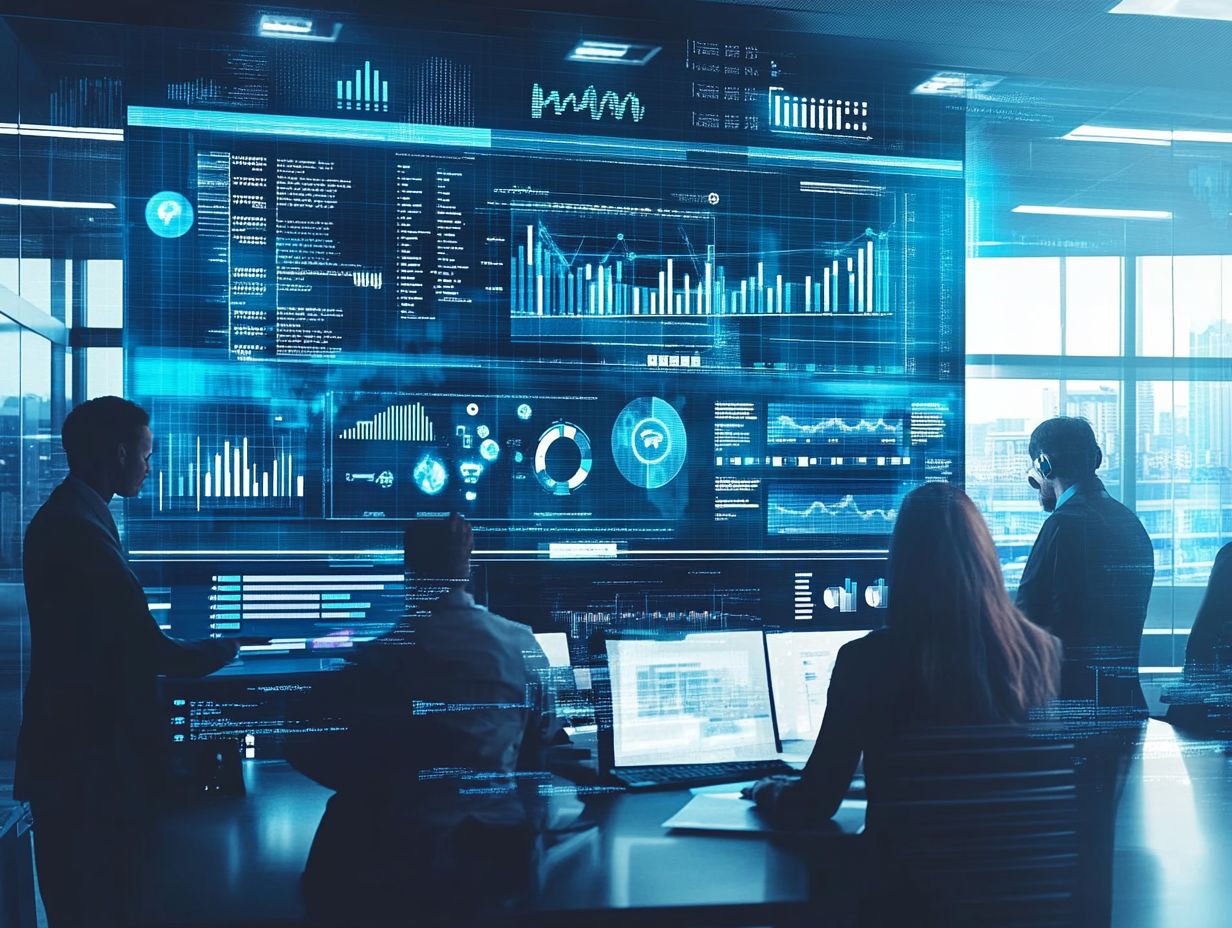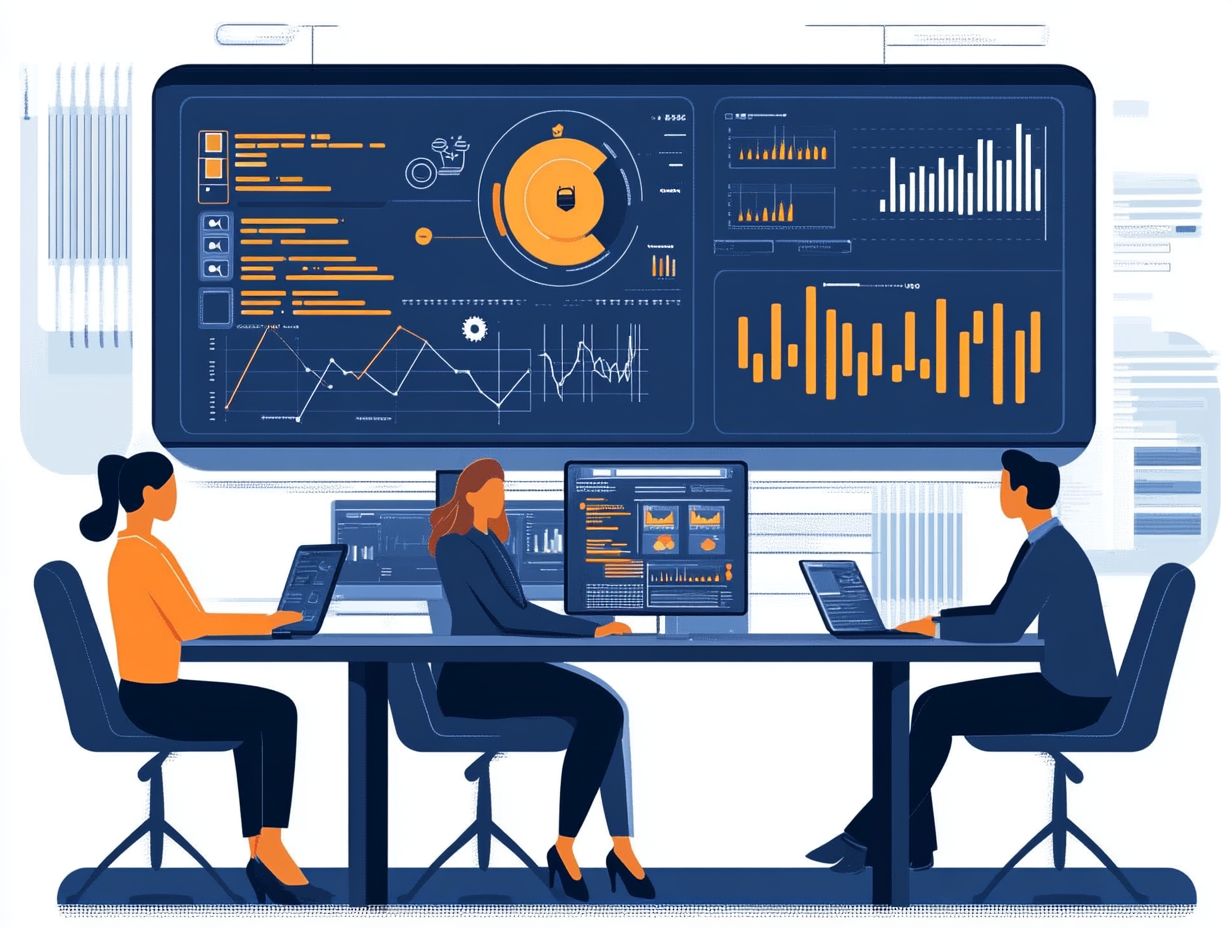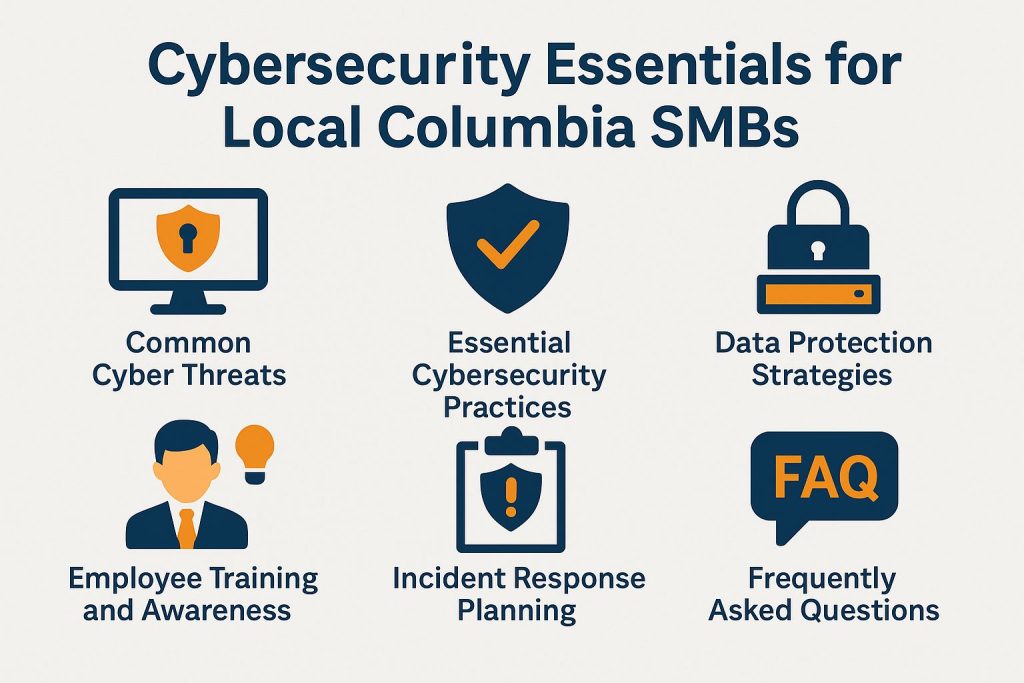Managed Cybersecurity: How Columbia Companies Can Stay Ahead of Hackers

Columbia Companies Face Cyber Threats: Protecting Data and Operations
Hackers are more sophisticated. Companies need strong cybersecurity solutions now. This article covers key parts of effective cybersecurity: network security, data protection, and employee training. It outlines best practices to help Columbia businesses stay ahead of cybercriminals. This ensures safety and resilience.
The Importance of Managed Cybersecurity and Risk Management for Columbia Companies
In an increasingly digital landscape, managed cybersecurity and cyber hygiene have emerged as critical investments for companies in Columbia seeking to protect their assets and maintain business continuity.
As cyber threats continue to evolve, organizations must prioritize robust cybersecurity strategies that effectively mitigate risks and ensure compliance with industry regulations. The significance of comprehensive cybersecurity measures is paramount, as they safeguard sensitive data, enhance threat detection capabilities, and foster a culture of cybersecurity awareness among employees.
With an appropriate cybersecurity framework established, Columbia companies can navigate the complex threat landscape and build resilience against potential security breaches, thereby securing their operational integrity and reputation. For further insights, you might be interested in exploring how Columbia businesses can benefit from managed IT services, as they complement cybersecurity efforts by integrating seamless IT solutions.
Rising Threats and Vulnerabilities and Cyber Threat Actors
The rising threat landscape poses serious challenges. Hackers develop new techniques to exploit vulnerabilities and compromise information. Understanding these threats is vital for assessing cyber risks and building strong security measures.
Organizations must monitor systems for signs of intrusion. They should use proactive detection to stay ahead. Insider threats have also emerged as a growing concern, as employees with access to critical systems can unintentionally or intentionally cause security breaches.
Amidst escalating concerns, organizations encounter various high-stakes threats, including sophisticated phishing attacks designed to deceive employees into revealing sensitive credentials, as well as ransomware incidents that hold critical data hostage until a ransom is paid.
Advanced Persistent Threats (APTs) further complicate the security landscape; these prolonged and targeted attacks aim to infiltrate and exfiltrate information over time, often circumventing traditional security measures and require continuous monitoring.
Regular security assessments are essential. They identify vulnerabilities and strengthen defenses. Furthermore, implementing a comprehensive incident management strategy enhances an organization’s preparedness to respond swiftly and efficiently, thereby minimizing potential damage from any successful attack.
Key Components of Managed Cybersecurity and Cybersecurity Strategy
Managed cybersecurity includes key components. These are critical for protecting an organization’s digital assets and ensuring a secure posture and cybersecurity architecture.
These components include the development and implementation of comprehensive security policies that align with compliance standards and regulatory requirements. Furthermore, organizations should adopt a robust cybersecurity framework that integrates various security measures, such as:
- Incident response planning
- Conducting security audits
- Performing regular vulnerability assessments
By prioritizing these components, businesses can establish a proactive security strategy that effectively mitigates risks and enhances their resilience against evolving cyber threats. For a deeper understanding of how managed IT services support such efforts, our comprehensive guide on professional tech support offers valuable insights.
Network Security and Endpoint Protection
Network security is a critical component of managed cybersecurity that involves the implementation of protective measures to safeguard an organization’s network infrastructure from unauthorized access and attacks. This includes the deployment of effective firewall management strategies, endpoint protection solutions, and continuous security monitoring to identify and respond to potential breaches in real time.
Many organizations are adopting zero trust security models. This ensures that all users, devices, and applications are authenticated before accessing sensitive data.
Strong security protocols guide the setup of defenses. These protocols should meet the specific needs of the organization. Intrusion detection systems play a vital role in this landscape by actively monitoring network traffic for signs of malicious activity. To stay ahead in cybersecurity, organizations should use advanced analytics and security technologies. These tools help find vulnerabilities and apply patches quickly, as highlighted in our exploration of managed IT services and professional tech support.
Furthermore, it is crucial to foster a culture of security awareness among employees. Human error is a leading cause of data breaches. As organizations prioritize their cybersecurity metrics, they gain the necessary insights to enhance their defenses and respond effectively to emerging threats.
Data Protection and Data Loss Prevention

Data protection is vital. It safeguards sensitive information from unauthorized access and loss, ensuring data integrity.
Organizations face many threats today. They need strong strategies for effective data protection. The implementation of encryption technologies is essential, ensuring that sensitive data remains unreadable to unauthorized users during transmission or storage.
Data classification is also a vital aspect, as it aids in identifying and prioritizing information based on its sensitivity, enabling the deployment of tailored protection measures. Additionally, regularly scheduled backup solutions are crucial, providing a safety net in the event of data loss and facilitating quick recovery and continuity of operations.
By establishing robust data protection policies that align with industry compliance standards such as GDPR and HIPAA, businesses not only protect their information assets but also foster trust with their clients and stakeholders.
Employee Training and Awareness and Security Awareness Training
Employee training and awareness are essential for establishing a robust cybersecurity culture within organizations, as human factors often play a critical role in security breaches. Regular training programs focused on cybersecurity awareness enable employees to recognize and respond effectively to potential threats, such as phishing attacks and social engineering tactics.
By equipping the workforce with knowledge of security best practices, organizations can significantly mitigate the risk of human error and promote a proactive approach to cybersecurity. Fostering a culture of cybersecurity enables employees to take ownership of their roles in safeguarding the organization’s digital assets.
These initiatives are pivotal in ensuring that all personnel are well-informed about the latest security policies and procedures. Through engaging workshops and interactive e-learning modules, employees can learn to identify suspicious activities and understand the importance of promptly reporting incidents.
Regular assessments and scenario training simulate real threats. This reinforces vigilance and compliance. When staff members are aware of their responsibilities and the potential consequences of neglecting them, they are more likely to adhere to established security protocols, thereby enhancing the overall resilience of the organization against cyber threats.
Staying Ahead of Hackers with Cyber Hygiene Practices: Best Practices for Columbia Companies
Columbia companies must take a proactive approach to cybersecurity. They should use effective risk management and best practices, including cybersecurity certifications and compliance frameworks.
Organizations should continuously assess their cybersecurity strategies and update their security measures to address the evolving threat landscape. This includes utilizing advanced cybersecurity tools that enhance threat detection and incident management, as well as fostering a culture of ongoing training and awareness among employees.
By prioritizing continuous monitoring and embracing a holistic approach to cyber resilience, businesses can effectively defend against malicious actors and protect their critical assets.
Regular Risk Assessments
Regular risk assessments help find security weaknesses. They also ensure compliance with industry regulations.
A structured approach to cyber risk assessment helps companies in Columbia evaluate threats. It also aligns security policies with compliance standards.
Involving stakeholders in the assessment process adds diverse perspectives. It helps understand risks better.
Using risk assessment software and tools automates data collection. This streamlines the process.
Best practices include continuous improvement. Findings should be documented and integrated into security strategies, ensuring a resilient response to emerging threats. Ultimately, regular risk assessments are vital for enabling companies to safeguard their assets while minimizing the potential impacts of cyber incidents and cybersecurity threats.
Continuous Monitoring and Updates in Cybersecurity

Continuous monitoring is critical. It helps organizations detect and respond to threats in real time. By implementing robust security monitoring solutions, companies in Columbia can maintain visibility into their network activities and identify suspicious behaviors before they escalate into significant security incidents and security incidents response plan.
Regular updates to security technologies and protocols are equally important for keeping pace with the evolving threat landscape. Organizations must adapt their cybersecurity strategies to address new vulnerabilities and ensure that their defenses remain effective against emerging attack vectors and cybersecurity challenges.
Utilizing advanced tools like SIEM systems provides insights into network health and threat modeling. These tools assist in automating threat detection and prioritizing incidents for rapid response.
Timely software patches prevent exploitation by attackers. They are essential for maintaining security. Coupled with an agile incident response plan and incident communication plans, organizations can not only react swiftly to breaches but also minimize damage and restore services efficiently.
Proactive measures and modern monitoring technologies are key for a secure environment.
Collaboration with Cybersecurity Experts and Ethical Hacking Professionals
Working with cybersecurity experts and insurance providers strengthens security and incident management. By partnering with experienced professionals, Columbia companies can leverage specialized knowledge and gain access to advanced cybersecurity tools that may not be available in-house.
This partnership helps organizations create tailored cybersecurity solutions for specific threats while ensuring compliance with security governance principles and regulatory compliance. Engaging with experts not only strengthens the security framework but also equips companies to navigate the complex cybersecurity landscape more effectively.
Involving managed security service providers (MSSPs) adds value to security audits and defense evaluations. These specialists possess a wealth of experience across various industries, offering insights that can reveal vulnerabilities that might otherwise remain undetected and support third-party risk management.
Businesses can create a strong incident response plan. This helps them prepare for potential breaches. The adoption of industry best practices helps organizations meet compliance. External experts can reduce risks. As mentioned, managed IT services can provide Columbia businesses with essential cybersecurity support, fostering a strong cybersecurity culture and robust information assurance.
Frequently Asked Questions
What is Managed Cybersecurity and Information Security?
Managed cybersecurity means outsourcing security management. This includes protecting networks and data, detecting threats, and responding to incidents. This allows companies to focus on their core business while leaving the responsibility of cybersecurity to experts and managed security services.
Why is Managed Cybersecurity Important for Columbia Companies and Their Security Infrastructure?

Columbia companies face cyber threats like hacking, data breaches, and malware attacks. Managed cybersecurity provides an extra layer of protection and proactive monitoring to prevent and mitigate these threats, minimizing the risk of financial and reputational damage and supporting robust perimeter security.
How Can Columbia Companies Stay Ahead of Hackers with Managed Cybersecurity and Cyber Risk Management?
Managed cybersecurity uses advanced technologies. These include threat intelligence, real-time monitoring, and security audits. They help find and fix vulnerabilities before hackers exploit them. This allows companies to proactively stay ahead of hackers and prevent cyber attacks.
What are the Benefits of Managed Cybersecurity for Columbia Companies and Their Security Ecosystem?
Managed cybersecurity has many benefits. These include 24/7 monitoring, faster responses, expert knowledge, and cost savings compared to in-house teams. It also allows companies to comply with industry regulations and maintain the trust of their clients and stakeholders, supporting strong identity management and encryption techniques.
Can Managed Cybersecurity be Customized for the Specific Needs of Columbia Companies and Their Cloud Security?
Yes, managed cybersecurity can be customized for Columbia companies. This includes determining the level of security required based on the size and type of business, as well as any specific compliance regulations that must be followed and supporting disaster recovery plans.
How Can Columbia Companies Ensure the Security of Their Sensitive Data with Managed Cybersecurity and Robust Access Control?
Managed cybersecurity includes data encryption, access controls, and regular backups. These protect sensitive data from hackers. These measures are continuously monitored and updated to stay ahead of evolving cyber threats, including strong perimeter defense and digital forensics.




